Smiths ATRC tachometers….
Smiths, the UK
Initially based on the chronometric principle and I’ve touched on these in earlier postings in my blog, they introduced magnetic mechanically driven tachometers based on the eddy current principle in production cars and aircraft, from the later 1930s culminating in the ATRC version in the mid 1950s.
The initials stand for Auto Tempo Racing ( and) Competition. The Auto Tempo part is from a company Smiths took over in the late 1920s and who supplied instruments utilising the eddy current principle and with a method of construction that Smiths continued with in their version.
Bentley and Rolls Royce cars used AT speedometers and tachometers from the 1920s up until the early 1970s when Smiths ceased production.
There was a London
The competition ATRC tachometers are 80mm (3”) in diameter…interesting this, as many of Smith’s instruments are in metric dimensions, having utilised this since the late 1920s when they acquired the French based Jaeger ED company, set up shortly before in the UK, and renamed it British Jaeger, who of course made their instruments to metric dimensions.
The bezel rim, same in construction as used on the Smiths Chronometric tachometer has an 80.00mm diameter x 0.90mm thread to screw on.. Yes it is not imperial and not 26tpi….
The bezel used on the ATRC has a Satin Chrome finish, to minimize glare from the sun blinding the rider or driver.
The body is an aluminium casting, machined internally, operating on the eddy current principle, each instrument incorporates a rotating magnet of special alloy and a movement carried on jewels. Individually manufactured and calibrated, the construction is such that variations due to temperature changes are within the limits of accuracy for this instrument. This is 1% of full scale in the temperature range 10-30°C. The mainshaft was carried in two ball race bearings, unusual for a tachometer or speedometer which are usually constructed using a bush assembly. This indicates the "specialness" of these tachometers...they really are "The Rolls Royce of instruments".
They were available in both clockwise and anti-clockwise dial scale ranges for 9000rpm, 10000rpm and 12000rpm, and clockwise only for 15000rpm, 18000rpm, 20000rpm and 22000rpm.
The last three were for Honda Motor Corporation who used them on their works racers in the 1960s.
BMW used a 10000rpm c/wise 2-1 version on their Rennsport engines used in the 1950s and 1960s.
The 12000rpm scales were used by NSU on their works racers and Sportsmax production racers ( 12000rpm anti c/wise dial scale), Gilera 4 cylinder factory racers ( 12000rpm anti c/wise dial scale), some MV Augusta racers, although they often used the 80mm dia. “white faced” competition tachos as did Moto Guzzi, although the V8 Moto Guzzi was supplied with an ATRC from Smiths.
CZ, Jawa etc also used Smiths instruments.
They must be used with an anti vibration mounting, code MS1001/00, manufactured for Smiths with the tachometer sitting on a central plate connected to an outer ring ( for attachment to the motorcycle fairing or cockpit, or car dash area) via an “O” ring in four places.
This provides a large amount of insulation from engine vibration and road shock.
The most commonly known use of the ATRC competition tachometer, was in the 9000rpm c/wise dial scale form ( code ATRC2652) used since 1956 to their closure in 1962 on AMC raceware…the 350 and 500 Manx Norton, the 350 7R AJS and the 500 G50 Matchless.
These were supplied with the cable connecting directly to the bottom of the tachometer via a 12mm x 1mm thread.
After 1962 as the dolphin fairing became utilised, Smiths made the ATRC tachometer with a built in 90° 1-1 non reversing angle drive fitted.
This allowed a better cable run to the tachometer drive on the AMC racers and was often utilised by others such as Honda Motor etc.
As well an interesting snippet is some time back, when John Surtees owned the ex works 500cc supercharged rennsport BMW that Georg Meier won the 1939 Senior IOM TT on, he was particular over his engine preparation and as the bike didn't have a tachometer fitted as standard in the period, he asked me to make him a 9000rpm ATRC 2-1 tachometer with a white face and the scale was as the normal ATRC, but the dial marking were from a German tachometer of the period, R.Muehle u.Sohn, Glashuettle/Sa.
A small Smiths screw-on 90° angle drive can be fitted to the straight cable entry tachometers, they are available as BG2410 a 1-1 non reversing type, or if you need to reverse the direction of the cable as it enters the tachometer because the scale goes “the wrong way” for your application, you could use the same small drive, coded as BG2412 a 1-1 reversing drive. These are pictured.
Pictured are some dial scale types from my dial catalogue….
How does this "eddy current principle" ATRC tachometer work?
Inside the tachometer is a magnet assembly driven by the drive cable.
As the magnet spins, it sets up a rotating magnetic field, causing electric current to flow in the aluminium detecting disc that closely surrounds it.This is called the speedcup which is the detecting disc. The electrical current that flows in the cup are small rotating eddies, known as eddy currents. The eddy currents themselves have a magnetic field around them and these are repelled by the spinning magnetic field from the magnet.
The cup and its attached needle turn in the same direction that the magnetic field is turning -- but the hairspring attached to the shaft in the centre of the speedcup resists the movement of the cup.The needle on the speedcup stops where the opposing force of the hairspring balances the force created by the revolving magnet.
What if the engine increases or decreases its speed? If the engine speed increases, the magnet within the speedcup will rotate faster, which creates a stronger magnetic field, larger eddy currents and a greater deflection of the tachometer needle. If the engine slows down, the magnet inside the cup rotates more slowly, which reduces the strength of the magnetic field, resulting in smaller eddy currents and less deflection of the needle.
When the engine finally stops, the hairspring , because of a zero error setting, holds the needle at a rest position ( which may not be “0”, as in the case of the ATRC whose dials start at 1000rpm, 5000rpm etc.)
I still manufacture these original type ATRC tachometers to the same specification as those from Smiths, with my manufacturing the case, bezel rim, dial, pointer, anti-vibration
mount and utilizing an industrial version of
this Smiths AT movement, identical in
operation to that originally used by Smiths.
I can repair the original versions utilising this parts source.
Also pictured are parts of the “internals” of the tachometer, with a movement with the speedcup and pointer assembly in a jig for setting the zero error to the dial.
As mentioned Honda Motor used these tachometers on their factory machines....pictured is a 16000rpm version on the former Mike Hailwood works 500/4 Honda, now owned by Virgil Ewings from California.
Included is part of a page from the notes of the late Jack Owens, last manager of the Smiths Competition Dept., Oxgate Lane, London, UK.
Left click on the images to enlarge…..















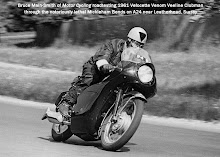

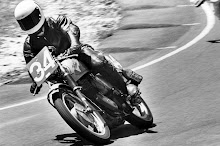

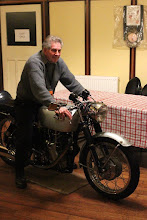
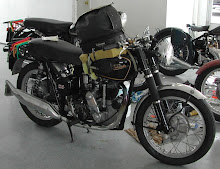
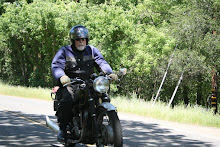


8 comments:
How do one change ther ration in one of these. Bought one from KTT years ago. Unfortunally it turned out to have wrong ratio for my application.
email me via my email address on the RHS of my blog...
vegavoxbanjo@gmail.com
Dennis.
Nice post. Thanks a lot for sharing. Anti Vibration Mount
Hi Iam trying locate a cable that will fit from a Smiths ATRC 2652/N onto a Ducati 860gts any info would be much appreciated
Regards Greg Mc
Greg.... the top end of the cable is the same as a Smiths chronometric tacho, that is it uses a 12mm x 1mm top nut 0.4" long and the inner square here is 0.120" x 0.120", this a squared 4mm inner wire cable to get this. The bottom, having to go into a metric drive on the Ducati is a 3mm squared cable which is 0.104" x 0.104". the usual method to make this cable with different squares at each end in to use the 3mm cable and at the top end, swage a special fitting end that is the square I mentioned earlier. Now I don't know where you are in the world, but the chap I sold all this cable business to when I retired, Tim Thearle, supplies the world market by mail order. His email address is..
tim.thearle@bigpond.com my email address is vegavoxbanjo@gmail.com if you want further information.
Can anybody tel me what the ATRC 3541/N was for 2:1 clockwise
Can anyone tell me where the A.T.R.C. 3541/N was mounted, cw
Huberpur.... The ATRC3541 10,000rpm 2-1 racing tachometer was used on works BMW's.... This means the Rennsport engines, used solo by Walter Zeller & others & the world championship winning sidecars of Florian Camathias, Luthringhauser,Georg Auerbacher,Fritz Scheidegger and others.
How they were mounted is in the special MS1001/00 Smiths anti-vibration mount & where on the bike you'd have to look for photos of these riders.
Best
Dennis Quinlan
The Velobanjogent
vegavoxbanjo@gmail.com
Post a Comment